Digital Remastering of Traditional Art
We live in a world manipulated by digital technology, where life without Wi-Fi and a smartphone would be unimaginable for many. 3D films and CG-simulated photographs are no longer novel ideas. It appears only natural, then, that even traditional art by great masters can be viewed in a digital mode.
The innovative exhibition “A massive screen projection reveals the world of five great painters—Hokusai, Hiroshige, Sotatsu, Korin, and Jakuchu” is showing at Otemachi Mitsui Hall until September 9th this year. It encompasses some 42 works by these five great artists from the 17th to 19th centuries, including National Treasures and Important Cultural Properties, among them outstanding paintings, Ukiyo-e woodblock prints, gold-gilt byobu folding screens, and fusuma sliding doors. These works are projected on giant screens using advanced digital techniques for remastering them as 3D data, a process developed by DTIP (Dynamic Texture Image Processing) of Ars Techne Corp. This exhibition is the first project of “ART-JAPANESQUE DIGITAL WORLD,” which aims to encourage new ways of appreciating traditional Japanese art using digital craftsmanship and video production. The magnificent masterpieces “Thirty-six Views of Mount Fuji” by Katsushika Hokusai and “The Fifty-Three Stations of the Tokaido” by Utagawa Hiroshige can finally be viewed in meticulous detail on seven-meter-high and 45-meter-wide triple panel wide screens.
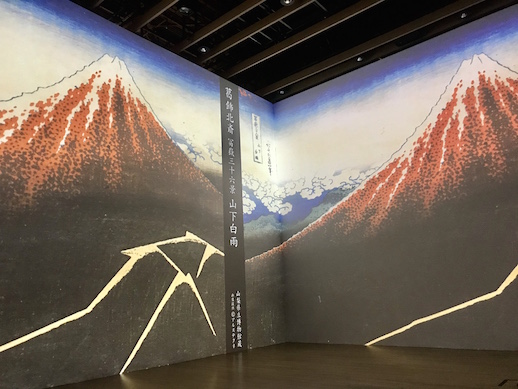
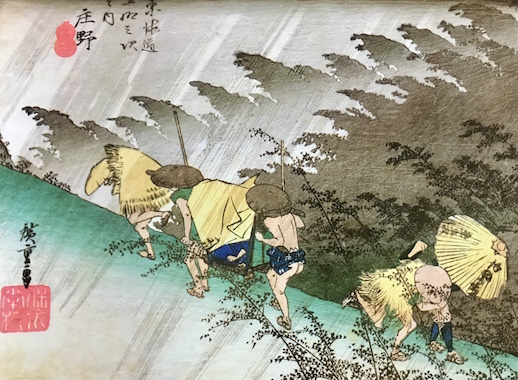
The first part of the exhibition is the Commentary Theater, which introduces selected works by the five masters. They are accompanied by precise explanations of the workmanship. The English subtitles are helpful for foreign visitors. The audience can enjoy enormous projections of “Wind God and Thunder God” by Ogata Korin, which apparently the artist patterned after Tawaraya Sotatsu’s “Wind God and Thunder God.” Korin laid tracing paper over the original work to outline the illustration, then retouched the expressions. We can see the equal sizes and positions of the statues of the two gods, but in close view, Korin’s screen is one size larger than Sotatsu’s. The change of perspective creates an impression that the gods have descended from the heavens in Sotatsu’s work and highlights Korin’s excellent sense of balance and design. Further, the eyeballs of Sotatsu’s wind god Fujin were drawn in the center, but Korin’s interpretation shows the eyes crossing each other. Also, Korin’s color expression of the mouth, body, and sash in lustrous green and red is more vivid than Sotatsu’s.
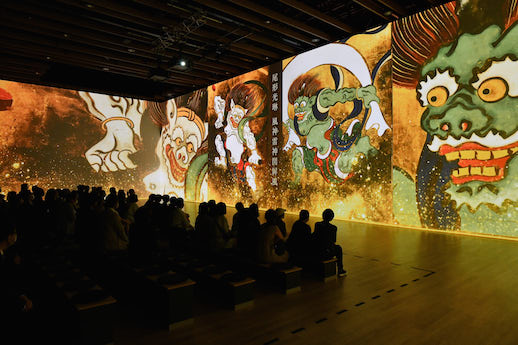
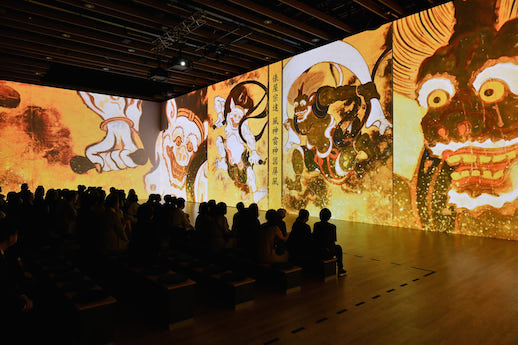
The comprehensive explanation also tells us of other features indiscernible without a giant screen. “In the Mountains of Totomi Province” (Fugaku sanjurokkei Totomi sanchu), one of the panels of Hokusai’s “Thirty-six Views of Mount Fuji,” shows a woodcutter in the center sawing a block placed diagonally above workers below. Hokusai’s ingenious artistic technique is reflected in the diagonal position of the wood and Mt. Fuji’s strategic placement in the background between two poles resembling a temple gate. The woodworker below the diagonal block of wood is sawing on his knees while holding the saw upwards. Such a working position would be unthinkable and illustrates Hokusai’s deliberate sense of humor.
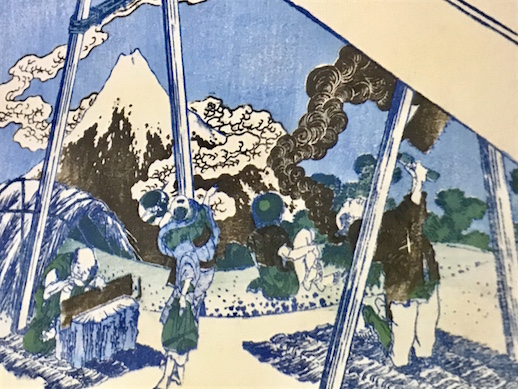
In the Three-sided Theater, all the works are displayed in a movie-like presentation accompanied by music on three-sided wide screens using 4K projectors. The strong impact of the paintings’ overall composition and details elevates the beauty of the art. We can visualize the uneven surfaces and delicate fiber strands in the traditional washi paper. In the folding screens of “The Tale of Genji” (Genji Monogatari) and “The Tale of Heike” (Heike Monogatari), the fine patterns of the costumes and motifs on objects, intricate paintings within the painting, and the battle scene are highlighted with utmost precision. In Ito Jakuchu’s charming “Flowering Plants” and “Cactus and Domestic Fowls,” the graceful lines of the flowers and chicken feathers are exquisite.
Finally, in the Digital Hokusai x Hiroshige Corner, around 58 of the best scenes from Hokusai’s “Thirty-six Views of Mount Fuji” and Hiroshige’s “Fifty-three Stations of Tokaido” are shown in ultra-high-definition digital images on twelve large monitors.
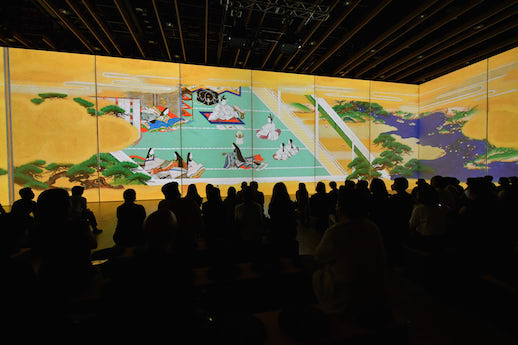
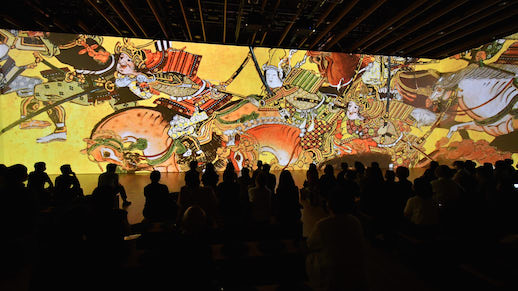
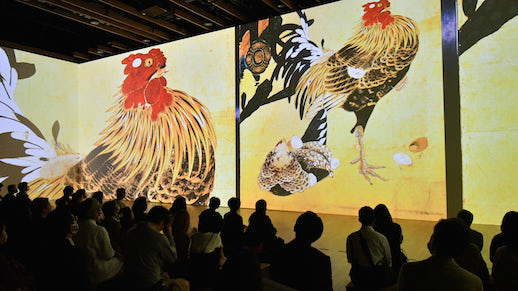
This unique exhibition delivers an alternative approach to appreciating art. Owing to cutting-edge technology, it leaves a lasting and valuable impression of the Japanese masters’ superior artistry. The screenings are changed daily with double programs, so it is best to check the website for the schedule and reservations.
Alma Reyes
Alma Reyes



